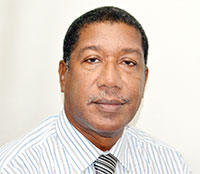FOR any individual, the exact status of one’s breath can be difficult to determine. The reason for this lies in the fact that the oral cavity, the source of our breath, is connected to our nose by way of an opening which lies at the back of our mouths in the region of our soft palate. Since noses tend to filter out and ignore the background of others, they tend to filter out our bad breath, too. This means that a person can have bad breath and not be aware of it.
So, how is your breath? Not sure? No doubt, at some point, each of us has had bad breath (halitosis) unwittingly, only to be embarrassed by the reaction of those around us.
If our noses can’t reliably help us judge the quality of our breath, how can we determine if we have bad breath? One solution is to ask the opinion of a spouse or significant other. In lieu of the availability of these individuals, you might ask a friend or your dentist or dental hygienist at your next appointment. If you find this too personal a question to ask an adult, don’t overlook asking a child. As we all know, sometimes the least inhibited and the most honest responses come from children. Is there a way a person can test their breath? There are ways to smell your breath accurately; however, you must take a slightly indirect route.
If you have decided on someone to give you an honest opinion as to whether you suffer from bad breath, then there is a scientific way to do the assessment. The test must not be done when you have just awoken, brushed your teeth, eaten anything within two hours, or rinsed your mouth with water or mouth rinse. Next, do the test in a non-breezy environment. Have the person be in a position in which their nose is not more than fourteen inches from your mouth. Go ahead and speak normally. I suggest, for example, the National Pledge, the Lord’s Prayer, a popular poem, etc. There must be at least one minute of talking. The person doing the test must objectively analyse the smell of the breath of the person taking the test.
You may also try this technique to test it yourself: lick your wrist, wait for about five seconds while the saliva dries somewhat, and then smell it. What do you think? That’s the way you smell, or, more precisely, that’s the way the end of your tongue smells (your tongue’s “anterior” portion). How was it? Did you pass this first check?
Now, do this experiment. It will check the odour associated with the back of your tongue (your tongue’s “posterior” aspect). Take a spoon, turn it upside down, and use it to scrape the very back portion of your tongue. (Don’t be surprised if you have an active gag reflex while the spoon is back there). Look at the material that has been scraped off. Usually, it’s a thick, whitish material. Now, take a whiff of it. Not so bad? Pretty nasty? This smell, as opposed to the sampling from the anterior portion of your tongue, is probably the way your breath smells to others. A chemical known as volatile sulphur compound is what we smell in bad breath. There are gadgets being sold online to test the presence and amount of this compound.
So now you know: the fundamental cause of bad breath for many people is the whitish coating which covers the surface of the posterior portion of their tongue. More accurately, most people’s bad breath is caused by the bacteria which live in this coating. The second most common fundamental cause of bad breath is bacterial products which live and accumulate elsewhere in a person’s mouth, such as in cavities of decayed teeth, plaque on and between teeth, tobacco, alcohol or some foods such as garlic, or more rarely, diabetes.



.jpg)









